
CURRENTLY VIEWING |
||||||
|
STARRY STARRY NIGHT
An interactive 3D casual game where you have fun playing with stars while stimulating your brain
|
||||||
 |
||||||
|
@
projects > games
|
||||||
|
SECTION MENU
|
||||||
Starry Starry Night is a game created during Codeathon, a 30-hour game competition held in Suntec City, Singapore, from 4 to 5 Sep 2007. We were required to create two brain training mini-games. Our group came up with a star game where the player is required to use his analytical skills and memory to finish the challenging requirements. The game subsequently won the Best Technical award.
A gameplay recording of Starry Starry Night
We wanted to make a game that totally immerses the player in a dreamy world where anything is possible. We wanted the player to feel like he can control how the stars moved, how the stars were associated and how the stars were created or destroyed.
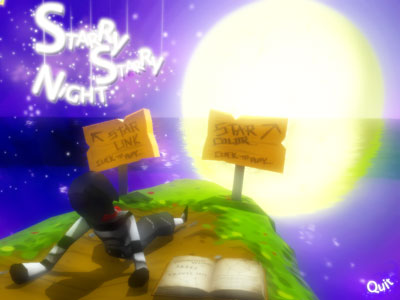
The setting of the game – Night time under the colorful stars
Since it is the night time (so that the stars can be seen), we also made it a point to include colorful elements such as the moon or meteor streaks to capture the player’s attention.
We also used a first-person camera so that the player feels like he is really there looking at the stars. This is further enhanced by letting a hand follow the mouse when the player draws linkages between stars. This is as though the player is drawing the linkages with his own finger!
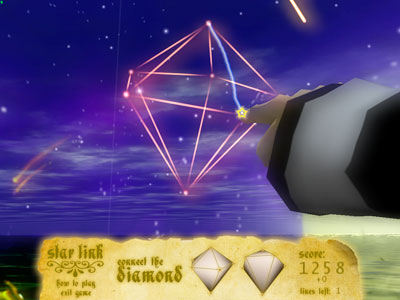
Drawing of the linkages with the index finger
All in all, we want the player to feel for the game and enjoy the experience.
Mini-game 1: Star Link – The Analytical Game
The first mini-game that we created involves linking up of the stars in the sky to form a complete 3D model. I suggested this idea because people always say that they can see images based on positions of the stars but I can never see them. If that’s the case, then why not just link up the stars by drawing with your finger, like in our game?
At each stage, the player is presented with a set of stars in the 3D world, as well as images of the 3D object to be formed.
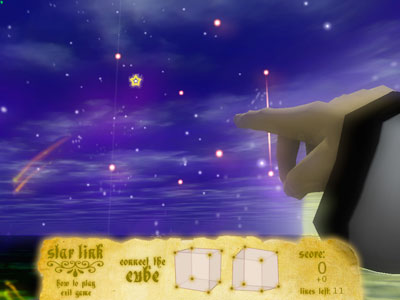
The set of stars in the sky and the corresponding guiding image at the bottom
The player is then required to rotate the sets of stars and figure out which pairs of stars should be joined up to form the complete 3D object.
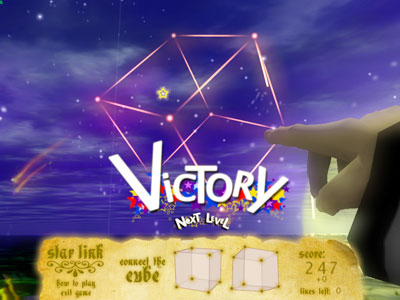
The completed cube model in the sky
In order to lower the difficulty of the game, 10-20% of the lines are loaded automatically when the stage starts. This is to help the player visualize the shape of the object.
The game starts off with a really simple stage that consists of a cube. The difficulty slowly ramps up and the player is required to form more complex shapes like a house and a teapot.
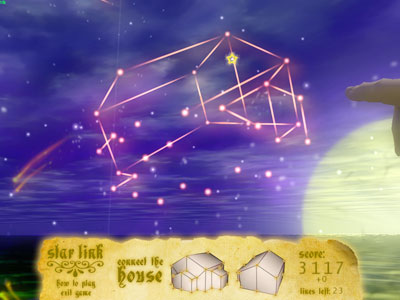
Trying to form the shape of a house
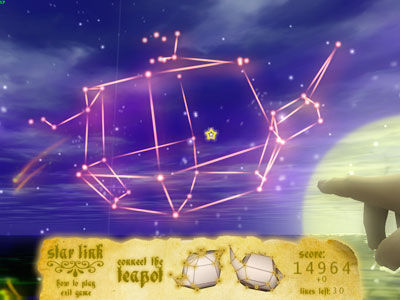
Almost done with the challenging teapot stage
Mini-game 2: Star Color – The Memory Game
The second game involves memory training with a little twist. Again, a set of stars are placed in the sky, but they are now of different colors. The aim is to draw a boundary that circles up stars of the same color. The more same-colored stars you can circle each time, the more points you’ll earn.
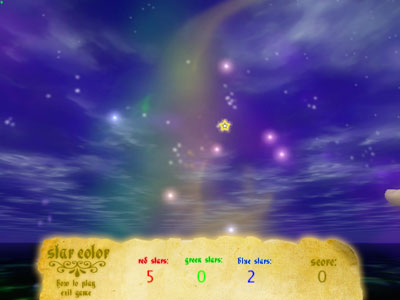
The set of colored stars in the sky
Sounds simple? The trick now is that the stars will rotate as a group in the sky randomly and the colors will fade out after the rotation. The player will have to remember where the same-colored stars are after the rotation and circle them.
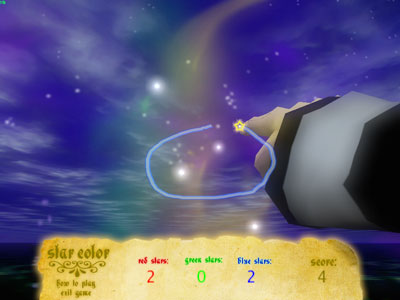
Trying to circle stars of the same color after the colors have faded out
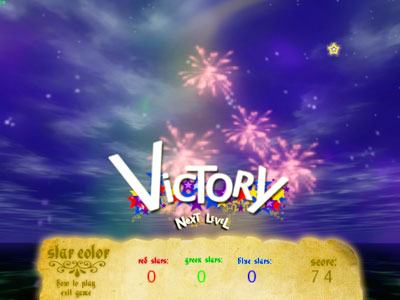
The victory screen
The game starts off with simple groups of stars and slowly becomes harder when there are many stars on the screen.

The harder stages really become quite confusing
Skeel Lee: Game Concept, Rigging, UI design, asset integration, modeling (hand)
Desmond Wong: Modeling (character & environment), texturing, concept art, UI design
Dennis Lee: Overlay/UI integration
Edwin Chan: Particle sprite generation
Ho Weiren: Game programmer

I know I’m late to the party here, but I stumbled across this and it looks like a very fun, clever game! Was this ever released anywhere? A shame if it wasn’t, I’d love to play it! Good work to all involved
No it wasn’t released. I’d create an updated version if the demand is high